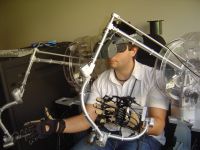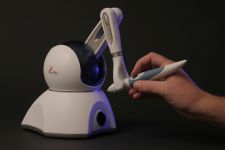What is Haptic Feedback?
Before we get started, let's break down the two words:Haptic is a Greek work that means pertaining to the sense of touch.
Feedback is used to describe a system where the output is looped to the input and is used to increase the control and stability of the system.
Together, Haptic Feedback describes a system that interfaces to a user through the sense of touch from either applied forces, vibrations or motions. These forces provide information about the environment the user is interacting with and allows more realistic interactions with this environment.
Virtual reality is a common area that haptic feedback is employed. These systems usually involve the user interacting with a robot. The robot serves two functions. First, the user is able to manipulate the robot and it measures the direction and orientation of these movements and adjusts the display accordingly. This function is identical to a joystick, video game controller or mouse. The second function is what provides the haptic feedback. As the user moves the robot, the robot provides forces to resist the users movements. This produces a sensation to the user that they are actually touching or interacting with the environment.
The two images below are examples of haptic devices. The first is an experimental device that allows a person to interact with a virtual world with the use of their arms and hands. The second is a commercial pen device called the Phantom Omni and was developed by SensAble technologies. This device allows the user to feel textures and shapes as they manipulate the pen on a virtual object.
For further explanation of haptic devices please visit Computer Haptics Demo.
 Experimental haptic device |
 Haptic interface developed by SensAble |